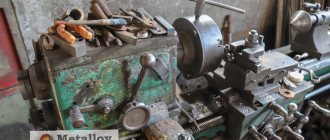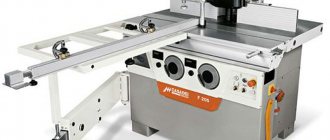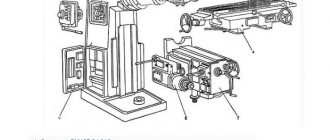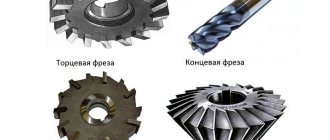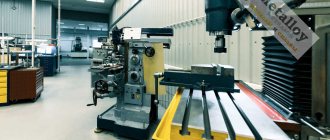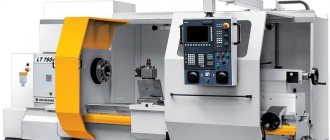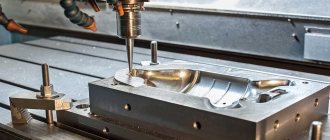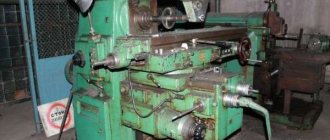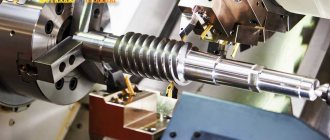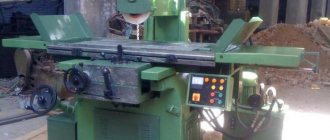In large enterprises and private workshops, there is often a need to produce parts of the same size and shape. To perform such work, it is necessary to use a copy-milling machine. The equipment makes it possible to produce identical parts that do not differ in size and shape.
Copy milling machine
Purpose
Often, a copy-milling machine is used to perform volumetric and plane processing; its operation is similar to those on which the CNC system is installed. At the same time, special models allow wood processing to be carried out in volume when a volumetric model is used as a copier. In the woodworking industry, volumetric processing allows:
- create ornaments and various inscriptions.
- engrave shaped profiles.
- create complex patterns, the edges or planes of which are located in different planes.
The woodworking machine in question is often used in furniture production. Many decorative parts that have complex shapes are created using a similar machine.
Main technical characteristics
To the standard characteristics of the milling machine:
- power;
- spindle rotation speed;
- dimensions of the workspace;
- number of speeds;
- stepper motor feed frequency.
The copying equipment adds:
- copying method;
- presence of a pantograph;
- performance;
- number of milling heads.
Console-type copy-milling machines have lower copying accuracy. To accurately repeat the dimensions of complex shapes, machines with a movable support are used.
Principle of operation
The possibility of significantly accelerating the production process of complex products is determined by the operating features of the copy-milling machine. Like metalworking, woodworking uses a cutting tool called a milling cutter.
The main points of the work include:
- The cutter creates a contour or surface that is specified using a copier.
- The connecting link between the cutting tool and the tracking device is a mechanical, hydraulic, pneumatic system. A woodworking machine most often has a mechanical feed and control system.
- The copier can be a flat template, a previously created reference model, a spatial model, a photocell, or a contour drawing. In some cases, such machines are equipped with CNC, which makes them highly versatile.
- The samples that act as a template can be made of metal, wood, plastic or other material.
A copy-milling machine works as follows: a sample of various types is installed, a tracking device is connected to it, which, through a certain type of connection, transmits the required force to the cutting tool.
Milling and copying equipment: operating principle
The operating principle of such a device is to clearly transmit the movements of the copy head through the holder profile to the cutting tool.
It is quite difficult to purchase a copy milling machine, so craftsmen make it with their own hands from scrap materials. Everything happens by trial and error. Therefore, experts advise first assembling a duplicate carver, and only then introducing it into mass production. As a rule, this stage is preceded by more than one serious adjustment and alteration.
Classification
The main classification can be considered to be the difference in the type of installed drive. Considering this feature, we can highlight:
- wood pantograph for router. this option can work in 2 or 3 dimensions;
- universal type, which is also called a pantograph, having a rotating arm. as a rule, the sleeve is located in a vertical plane;
- There are design options that have several spindles to speed up the processing process;
- with mechanical, electrical, hydraulic feed;
- photocopy type of contour transfer for guiding the cutting tool.
Woodworking machines also differ in the level of automation of the production process. In this case, CNC is installed quite rarely, since the template processing method does not require a Numerical Program Control system to indicate the trajectory of the cutting tool.
Making a machine with your own hands
There are a huge number of copy-type woodworking machines, which are known as pantographs, and have a CNC system (a universal option that allows processing using a copier or program). However, not everyone can purchase such equipment, which is associated with its very high cost. The addition of CNC makes the equipment available only to large manufacturers, when the payback period for the equipment will be less than 5 years. That is why many people ask the question - how to make a machine with your own hands?
Read also: Voltage 12 volts DC
Before you start work, it is worth remembering that do-it-yourself machines are significantly inferior to industrial models. At the same time, it is impossible to make a CNC version yourself. Also, many note that converting a regular milling version into a copying version with your own hands is also very difficult, and, often, it is easier to start from scratch. It is not difficult to make a pantograph yourself, but there are still certain difficulties in this process.
Homemade pantograph for a router
There are many schemes by which you can create a copy-milling machine with your own hands. A typical version usually consists of the following elements:
- Desktop;
- supporting frame;
- milling head.
To carry out the procedure for changing the cutting mode, the height of the table changes; the head with the cutter has an electric drive, which sets the cutting tool in motion; often the system includes a transmission mechanism for changing speeds.
The pantograph itself can be made as follows:
- Made of wood. You can create such a pantograph with your own hands, but it will have low processing accuracy, since the wooden parts are connected using a loop. Fastening with loops is characterized by backlash.
- Drawing pantograph made of metal - allows you to create copies at various scales, but cannot be used to create three-dimensional copies.
When creating a machine with your own hands, you should take into account that many parts may have flaws and discrepancies in size. This situation is associated with vibration and trembling of the base, which is quite difficult to avoid. When changing the direction of movement of the cutter, errors are also possible. Due to the internal stress of the wood workpiece, the workpiece may become distorted. Therefore, it is recommended to create such equipment only for narrow-profile production, when the machine will be designed to create one part. It is almost impossible to avoid the problems under consideration, however, provided that the same part is processed, gradual improvement of the design is possible.
If you find an error, please select a piece of text and press Ctrl+Enter.
Copy-milling machines are used for milling fitting grooves, drainage holes, lock cylinders, and other technological holes.
Portable copy milling machine
Copy milling machine with cooling
copy milling machine (portable)
The complete set of individual models allows you to drill PVC simultaneously with reinforcement (as, for example, in FR 225). Automatic operation of the cutter is ensured by an adjustable hydropneumatic mechanism.
A copy milling machine is useful both in enterprises and at home. Technical characteristics, types and design of the machine.
A milling machine is useful both in enterprises and at home. The main thing is to decide in advance what type of equipment you need to purchase. After all, the unit is available in several varieties, each of which has its own parameters. The choice depends on the purpose of the device and the required results.
In production or home workshops, sometimes you have to create parts with specific patterns in shape and size. Copy-milling machines are devices that allow you to solve a problem in an enterprise environment. Processing is guaranteed to take place with high speed and accuracy when using copy milling machines.
Read also: Hydraulic rolling jack 5 tons
Milling and copying equipment: design
The typical design of a copy-milling machine is completely simple. It consists of a work table and a guide system with clamps for attaching the router and copier.
Making a universal copy-milling machine at home is quite difficult, and there is no great need for it. For home use, equipment with highly specialized specialization is usually created.
Specifications
Each model has its own specific numbers for parameters. The following technical characteristics are important for models of any type:
- Weight.
- Electric motor power and speed.
- Maximum vertical movement of the table.
- Transverse movement of the table.
- Longitudinal travel of the table.
- Determining the dimensions of the working surface of the table.
- The working surface of the table of the product that is being copied.
- Diameter of the largest circle.
- Copy scale.
The machines are equipped with additional tools that help create various shapes. Using templates makes your work easier.
Criterias of choice
For craftsmen who occasionally make crafts in their workshop, it is enough to purchase a manual copy-milling machine. To produce large quantities of parts, CNC equipment is required.
The main criteria for choosing a machine model are the material being processed and the dimensions of the workpiece. Then, based on the volume and complexity of the products, you should pay attention to the technical characteristics of the model:
- copying method;
- power;
- spindle speed;
- processing accuracy;
- number of milling heads;
- operations performed;
- table tilt angle;
- method of reading information;
- presence of movement along 4 axis.
For industrial enterprises, it is important that the machine can be integrated into automatic lines.
Capabilities of copy-milling equipment
Copying group machines belong to equipment with cutters. An excellent option when processing parts that have surfaces with volume and defined planes. This design will allow you to easily engrave so-called shaped products, with the application of inscriptions and patterns. Milling work involves light processing of wood and metal.
Metal tools are equipped with cutters based on different materials. This makes it possible to process various substrates:
- Cast iron.
- Steel, different grades.
- Metal, colored.
One of the areas of application is large- and small-scale production of parts with different characteristics.
Copying machines are capable of performing operations that are inaccessible to owners of conventional universal devices. The basic principle of operation is copying, which uses templates. Even the processing of highly complex forms takes place without the human factor. The geometric plan parameters of the parts remain the same. Large batches of parts are also produced based on one template.
Special copiers are installed on the machine to make the result of the work even more accurate.
Milling and copying equipment: areas of application
Milling copying machines can process not only flat, but also three-dimensional parts. With their help, along with simple milling operations, you can perform engraving, repeat drawings, patterns and inscriptions. The design of the machine is quite simple, and any craftsman can make it.
Copy-milling machines allow you to process not only wooden parts, but also cast iron, steel and plastic workpieces, as well as products made of non-ferrous metals. This is ensured by high-quality tools made of high-speed steel and hard alloys. The copying machine allows you to mill not only straight, but also curved surfaces. In this case, the details are completely identical.
Machine device
The main purpose of the machines is milling, planar and volumetric type. The main working tools are the so-called cutters. They are responsible for processing the contour or volumetric surface of the part. The copier movements are repeated. Elements of various types form the connection between tracking systems and operation authorities:
- Mechanical.
- Pneumatic.
- Hydraulic.
Such elements form the force received by the working body from the copier.
The device works with templates – spatial and contour models in a plane. Standard parts or outline drawings are also used. The cutter is read:
- Photographic elements.
- Probes for special purposes.
- Roller, finger mechanisms.
Template sheets are made using aluminum and any other metals, wood or plastic.
Processing of parts and templates takes place on a working machine, with rotation.
The use of the following parts begins the movement of the working body:
- Coupling electromagnetic element.
- Differential part.
- Solenoid.
- Spool-type valve part.
- Screw design.
Relays are mandatory devices for copiers; they are placed on the reinforcing parts. They can be of several types: with electromagnets, hydraulic, electro-optical type.
The speed at which the tracking device moves is a parameter that determines the quality of the finished part. For finished products, you can achieve the following parameters:
- Profile accuracy up to 0.02 millimeters.
- Roughness – No. 6.
The hydraulic cylinder together with the electrical circuit become the main elements for the actuator circuit of such equipment.
Copying at a given scale is ensured by a pantograph. It also has a design consisting of several parts:
- Separate rotation axis.
- Tool spindle.
- Guide pin axis.
- The finger itself.
One rack accommodates the spindle along with the guide pin. The ratio of the shoulders at the staff determines the copying scale.
Read also: Welding fixtures and mechanisms
The rod begins to move when a finger is moved along the template. At the next stage, free axial movement is carried out. On the other side of the slats, the movements are identical, using a machine spindle. The latter will be needed when making tools yourself. The functionality of the device increases.
Types of copy-milling machines
Copying machines are equipped with various types of equipment. This parameter allows you to select the following groups of devices:
- Photocopy varieties.
- Machines in which the feed is carried out by hydraulics or electrics, mechanics.
- Varieties with one or several spindles. They are equipped with special rotary tables with a rectangular or circle shape.
- When using a copier. When securing the latter, a rotary rack is used. It itself moves vertically along the plane.
- With the addition of pantographs. Helps process parts in 2-3 dimensions simultaneously. Many people choose the Dekel GK 21 model.
It is permissible for craftsmen to independently create machines belonging to one of the groups described above. All that remains is to find the drawings along with the necessary components.
The following categories are distinguished depending on the degree of automation:
- Equipment in a hospital, fully automatic. The kit includes springs that act as pneumatics, with a three-spindle type head. Simultaneously drills triple type holes.
- Stationary machines, when pneumatics, represented by springs, are responsible for fixation.
- Manual or tabletop, using a mechanical fixation method.
Principle of operation
The part that sets the characteristics during processing becomes copiers. The head at the table is the main tool for work, accepting movements on the working surface, contour. The repetition of movements is carried out using parts with cutters.
The work of the main elements is carried out with the main and auxiliary movements. The main thing is that when the spindle rotates and moves, the tools cut into the workpiece materials, and a table with a slide moves along the contour.
There are several types of auxiliary movements:
- Accelerating the movement of the table and slide.
- Moving installations, from tables with copying fingers, stop mechanisms, clamping.
Ordinary actions and the use of feedback are the two main types of circuits, the implementation of which is allowed for devices. A rigid connection with the copier is the basis of the simplest scheme, the direct variety. There is no connection when the movement is reversed. The tracking device transmits movements.
When a contour or volume is milled, machines of this type are ideal. If contour milling is used, it is assumed to use a plane that is parallel or perpendicular to the tool. The second case involves moving the table along or across. Volumetric version of work - when the part is processed in stages. When moving, several planes are used at once.
The pantograph also allows you to implement a direct scheme. It reduces the size of finished products compared to templates. Making your own devices, if necessary, will not be a hassle.
